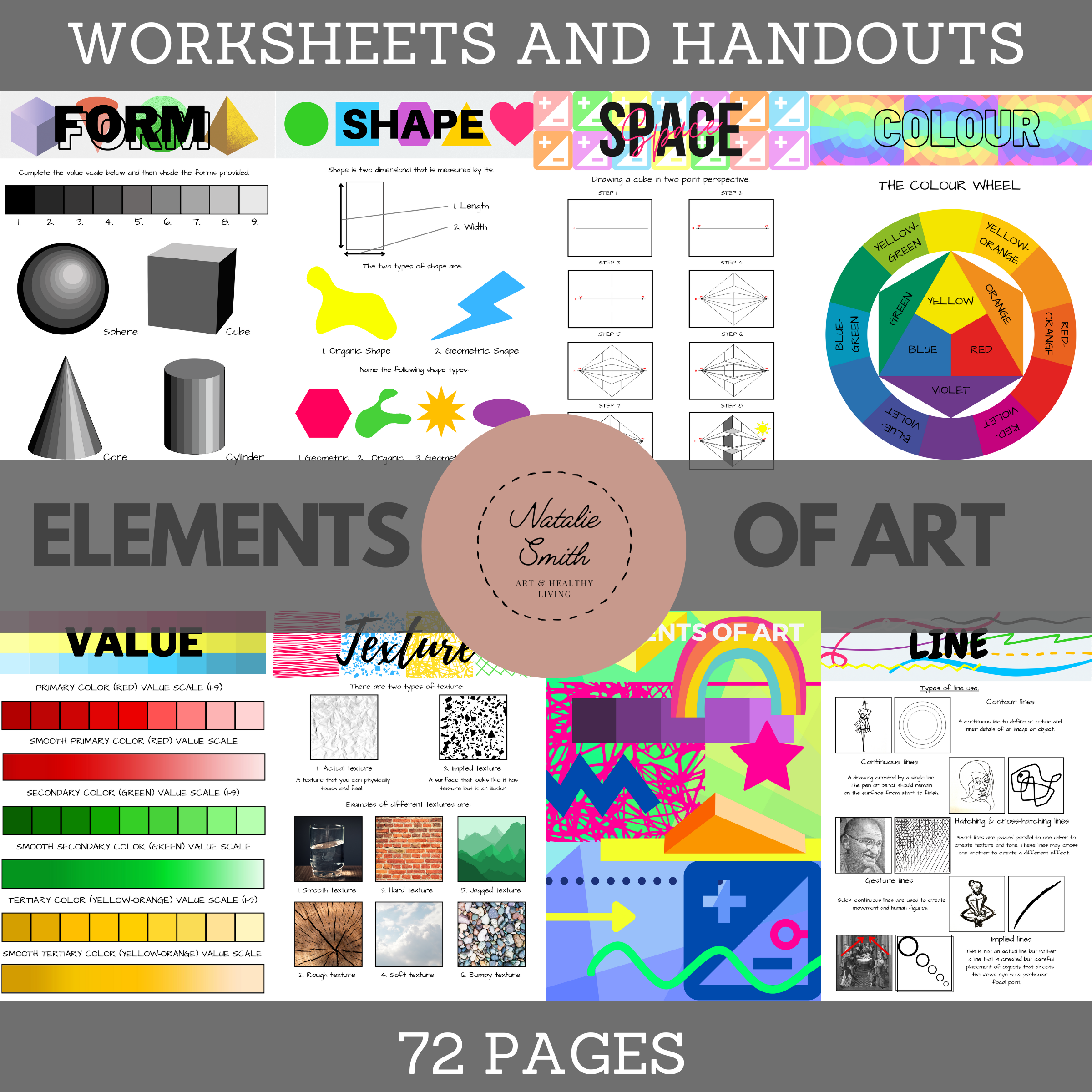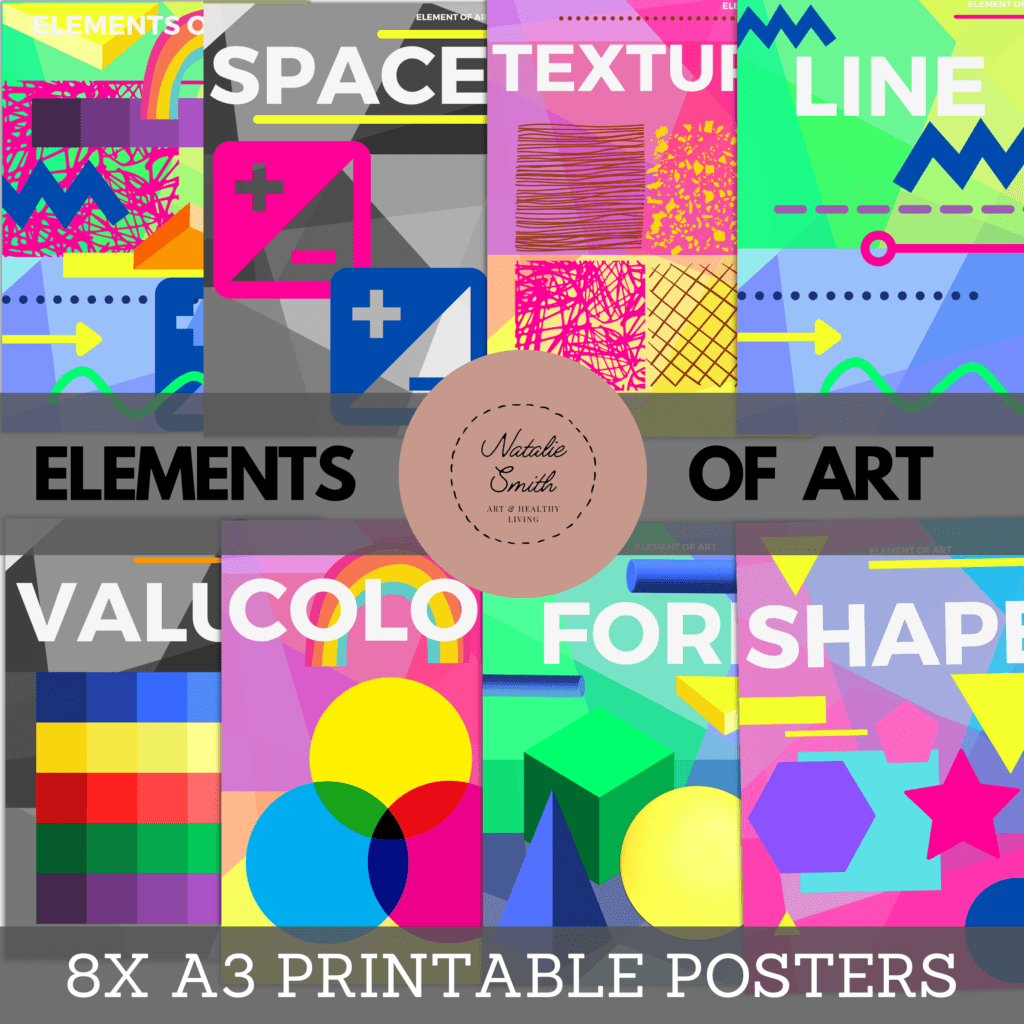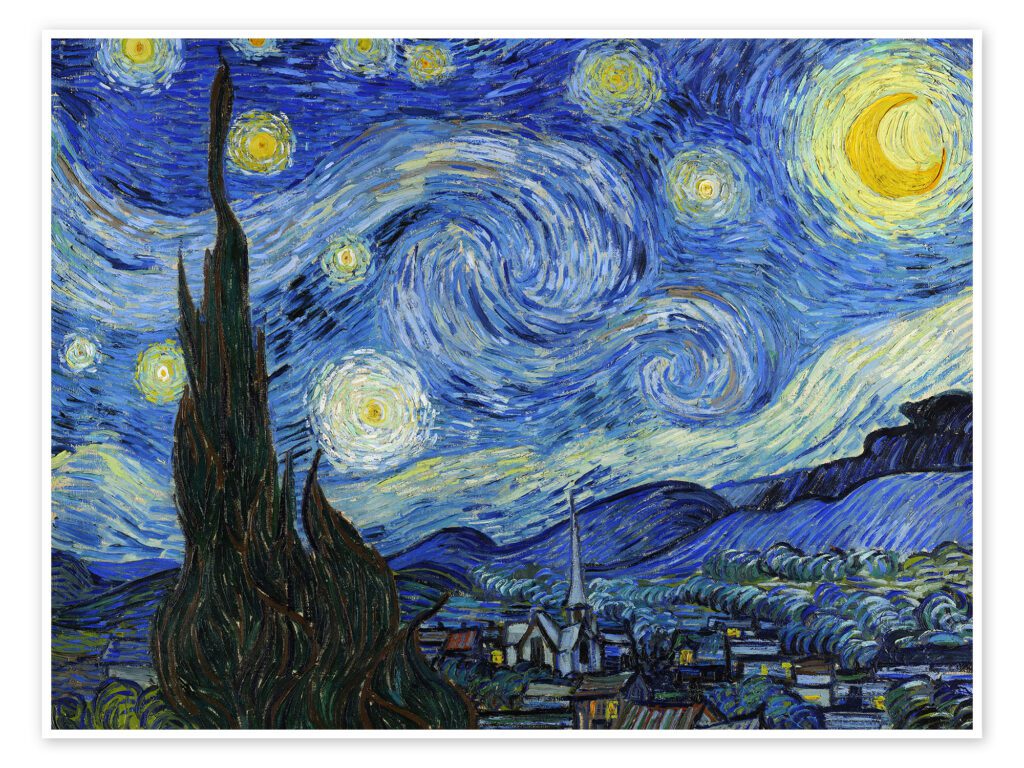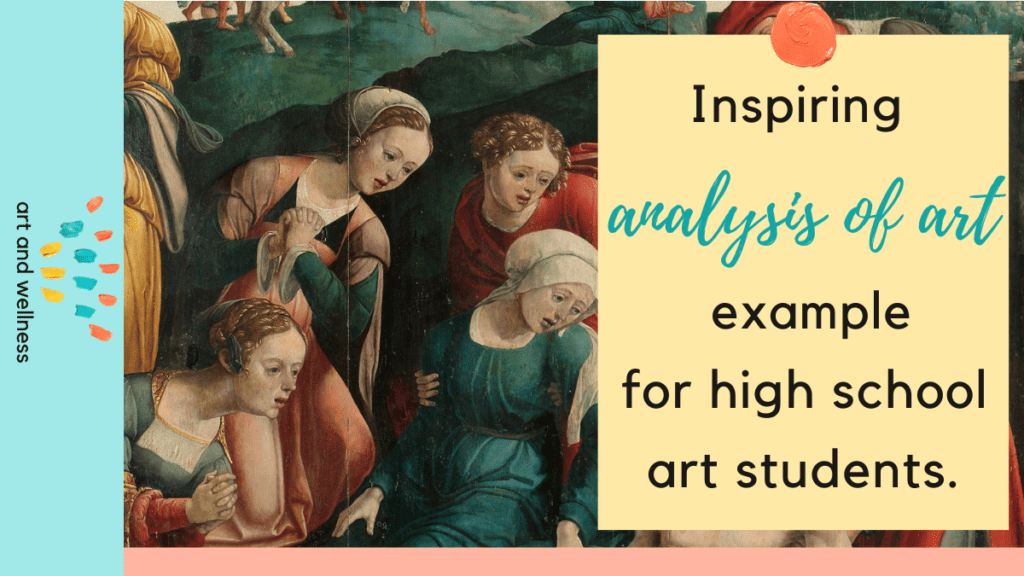Teaching Stylistic Analysis of art to High School Students
Art is a powerful medium to explore self-expression, storytelling, and culture. Teaching high school students how to analyze the stylistic elements of art can be an enriching experience. It not only helps them appreciate the depth of artistic works but can develop their critical thinking and observation skills. Here is a step-by-step guide on how to teach stylistic analysis of art to high school students and an inspiring analysis of art example .
What is art analysis ? The Basics of Stylistic Analysis
Art analysis is the process of critically examining and interpreting artworks. It involves breaking down the components. This includes style, form, context, and content to gain a deeper understanding of its meaning and significance.
Before diving into the classroom lesson, it’s important to understand the key components of a successful stylistic analysis. These are the fundamental elements that make up an artwork’s style:
1. Elements of Art and Principles of Design
Including lines, shapes, colours, texture, space, contrast and rhythm. As a teacher, help your students understand how these elements are used in art to convey meaning and emotion. Dive deep into the elements of art by working through these worksheets. Click on the image below for a wonderful resource to simplify teaching the elements of art.

2. Technique
Teach students about different artistic techniques such as brushwork, layering, use of lighting and shadow. Each techniques plays a significant role in the creation of an artwork’s style.
3. Iconography
Introduce the students to the use of symbolism and motifs in art. Discuss how artists use symbols to convey deeper meaning. You can do this by having a class discussion around images that you have displayed. Each student can describe what they see and interpret the meaning. Click here to see examples of the top 5 symbolic artworks.
4. Historical and Cultural Context
Explain how the era and culture in which an artwork was created can greatly influence its style and meaning.
Teaching Stylistic Analysis
Here’s an analyzing art step-by-step plan to teach to your students:
1. Start with the Basics
Begin with a general introduction to the importance of stylistic analysis. Explain why it’s a valuable skill and how it can enhance their understanding of art.
2. Visual Elements
Break down the visual elements (lines, shapes, colours, texture, space, and composition) one by one. Provide examples and encourage students to identify these elements in famous artworks. Use the elements of art and principles of design posters on your classroom wall to assist your students in the beginning. Click on the image below for a wonderful resource to simplify teaching the elements of art.

3. Hands-On Activities
Engage students in hands-on activities. This helps students that prefer making art and that may struggle with theory overload. Let them experiment with different brushwork techniques, or create a collage using various shapes and colours. This will help them understand how artists manipulate these elements to achieve a particular style.
4. Analyze Artworks
Select a variety of artworks from different time periods and art movements. Explore their formal elements, technique, and iconography. Encourage students to discuss the emotional and psychological impact of these artworks as well. Begin by choosing one artwork to analyse
and do so together as a class and then encourage them to try it in pairs before analysing artworks alone. This can give your students confidence.
5. Historical and Cultural Context
Teach students about different artistic movements and the cultural and historical factors that shaped them. Discuss how art can be a reflection of the society and culture in which it was created by showing them examples.
6. Iconography and Symbolism
Delve into the use of symbols in art. Analyze how artists incorporate symbols and motifs to convey meaning. Encourage students to interpret the hidden messages in artworks. You can make this fun by forming groups and providing each group with an image to interpret. Once done, a representative will share what they believe the hidden meaning of the artwork is.
7. Comparative Analysis
Ask students to compare and contrast two artworks from different periods or movements. This exercise will help them see how styles have evolved and been influenced by historical and cultural contexts.
8. Student Presentations
Have students select an artwork and present their own stylistic analysis to the class. This encourages independent research and helps them articulate their insights and observations.
Resources and Gallery visits
Utilize various resources to enrich your teaching. Art history books, documentaries, and online galleries can provide students with a wide range of art to analyze. A wonderful online gallery to consider is the National Gallery, London. Encourage each student to choose a few paintings and present their analysis of paintings as a project. If possible, consider a field trip to a local art museum or gallery to view art up close and think about create a projects around how to analyse a portrait painting.
Encourage Open Discussions
Foster an inclusive and safe classroom environment where students feel comfortable expressing their opinions and interpretations of art. Encourage healthy debates with their peers and encourage discussions about the stylistic elements and meanings behind different artworks.
Assessment and Feedback
Assess students’ understanding through essays, assignments, quizzes, or projects that require them to apply stylistic analysis to specific artworks. Provide constructive feedback to help them refine their analytical skills and provide art analysis essay example to give them an idea of what a successful analysis looks like.
Check list
Finally, provide your students with a clear checklist of what to include in an successful stylistic analysis to remind them of the steps that need to be taken. These are great for them to return to at time during their studies to refresh their memories. Click here to purchase a digital analysis handout.
Simple analysis of art example
Here is a simple analysis of art example to get you and your class started.

1. Describing the Composition
The painting features a night sky with swirling, turbulent patterns of stars and a small village with steepled buildings in the foreground.
2. Colour Palette
Van Gogh uses bold and expressive colours, with deep blues in the sky, contrasting with the vibrant yellows and oranges of the stars and the village.
3. Brushwork
The artist uses thick and dynamic brushstrokes that create a sense of movement and energy. The swirling patterns in the sky and the textured application of paint add to the emotional intensity of the painting.
4. Elements of art
Line:
The painting is dynamic, swirling lines depicted in the night sky. These lines convey a sense of movement and energy. The lines in the village buildings are more rigid.
Colour:
Van Gogh’s use of colour is bold and expressive way. The deep blues of the night sky create a dramatic backdrop, while the vibrant yellows, oranges, and whites of the stars provide contrast. The use of complementary colours adds to the vibrancy and visual interest.
Space:
The sense of space in “Starry Night” is both vast and confined. The expansive night sky gives a feeling of infinite space, while the compact village below creates a sense of containment.
Texture:
Van Gogh’s distinctive brushwork and impasto technique create a textured surface throughout the painting. The strokes are visible and tactile, adding depth and dimension.
5. Content
Subject Matter:
The main subject is the night sky over a village.
Symbolism:
The swirling patterns in the sky, the exaggerated colours and the stylised and expressive style could represent the artist’s emotional state. The dominant cypress tree is often interpreted as a symbol of death and resurrection.
6. Context
Historical Context
Starry Night was painted in 1889 and it is a post-impressionist work. This movement wanted to break away from the naturalism of impressionist movement. During post-impressionism, the artists sought to explore more emotional and symbolic content.
Biographical Context
Van Gogh painted this during his time in the Saint-Paul-de-Mausole asylum, which adds to the emotive nature of the painting. The intensity and turbulence in the painting might reflect his own mental struggles.
7. Style
Expressionism
The painting is often associated with the expressionist movement due to its emphasis on emotion over naturalism. The distortion of forms, bold colours, and energetic brushstrokes add to this stylistic categorization.
Post-Impressionism
“Starry Night” showcases moving away from the realistic depiction of scenes in favour of a more personal and subjective interpretation.
Conclusion
Teaching stylistic analysis of art to high school students is a journey of exploration and discovery. It opens their eyes and helps them become more appreciative of art. By following this guide and including your unique teaching style, enthusiasm and passion for art and providing an analysis of art example , you can inspire your students to a lifelong love for the arts.
Looking for more art teacher blogs posts and resources? Click here for more about what we have to offer.
